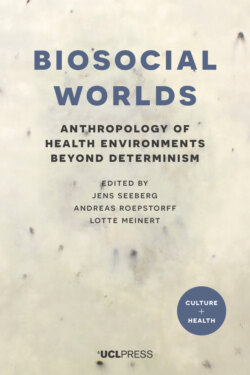Читать книгу Biosocial Worlds - Группа авторов - Страница 28
На сайте Литреса книга снята с продажи.
The intergenerational transmission of toxins
ОглавлениеAn illustration of toxic local biologies is furnished by the mercury-contaminated Grassy Narrows’ Wabigoon River system in Ontario, Canada. The government claims that defilement of the river stopped 40 years ago when the paper mill was forcibly shut down, after dumping about 9,000 kilograms of mercury into the downstream river. Today mercury levels in the fish near Grassy Narrows are 15 times the safe consumption limit, and 40 times the limit for children, pregnant women and women of child-bearing age (Mosa and Duffin 2016). The Grassy Narrows people have fought for 45 years for a clean-up of the river, but the Ontario Minister of Environment reiterated in May 2016 that there is no need for this. Further pressure apparently made the government temporarily change its position, but in late 2016, once again, the provincial government backed down, claiming a lack of funding, despite an official report by mercury experts stating that the river remains badly contaminated. Two generations of people from Grassy Narrows and Wabaseemoong First Nations today exhibit symptoms of mercury poisoning, including loss of muscle coordination, numbness in the hands and feet, hearing loss, speech damage and tunnel vision. Fetuses are particularly vulnerable to cognitive damage. Extreme cases result in paralysis, insanity, coma and death (Mosa and Duffin 2016).
In the mid-1950s, mercury poisoning was detected in Japan. First, the local cats appeared to go crazy and some ‘committed suicide’ by ‘falling’ into the sea. Thereafter, humans started to report numbness in their extremities; tremors; difficulty walking; and some appeared to be seriously mentally ill (Kugler 2016). By 1959 it had been established that mercury poisoning was causing the symptoms, and the condition was labelled Minamata disease, drawing on the name of the fishing village where it had first occurred. A large petrochemical plant in Minamata, Chisso Corporation, was immediately suspect. Chisso denied involvement, even though it was clear that an estimated 27 tonnes of mercury compounds were present in Minamata Bay. Protests began in 1959, but it was 1968 before the company finally stopped dumping. Close to 3,000 people contracted Minamata disease, more than half of whom have died. Japanese scientists have been summoned to Grassy Narrows, and state that up to 90 per cent of the people show signs of mercury poisoning that may well be intergenerationally transmitted (Mosa and Duffin 2016).
